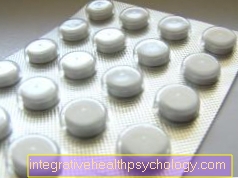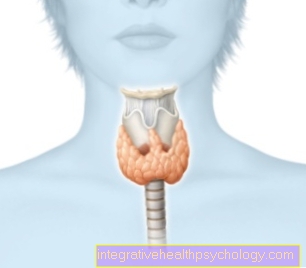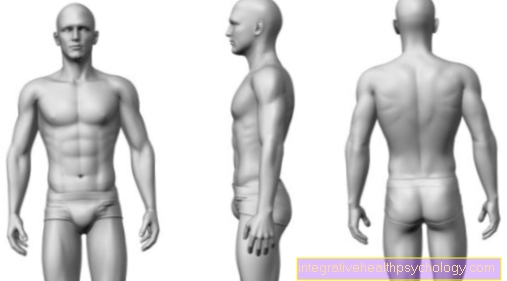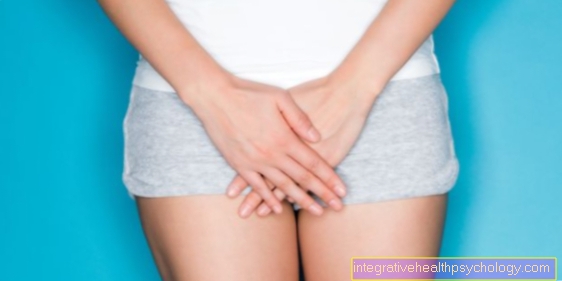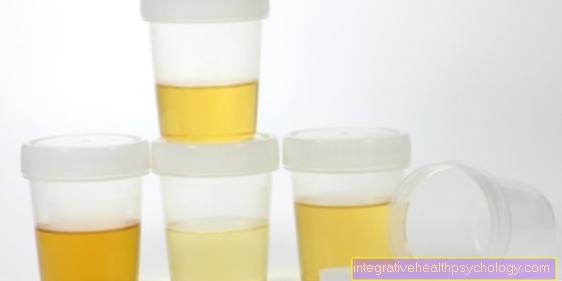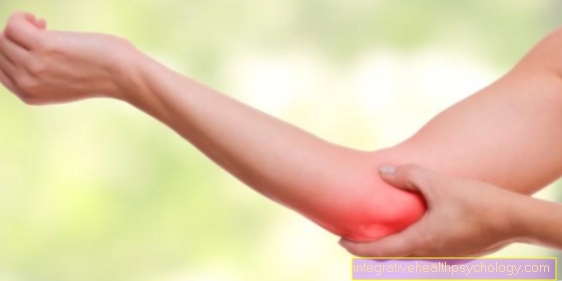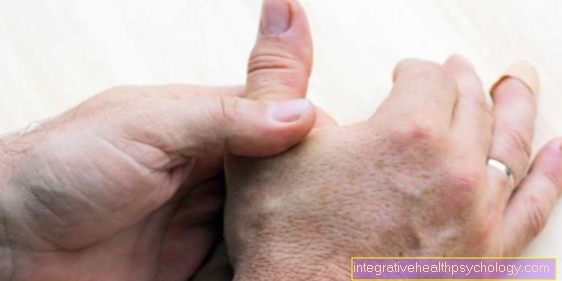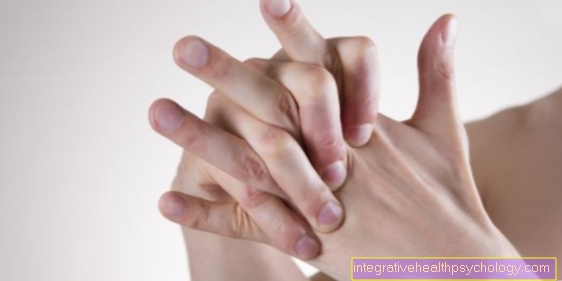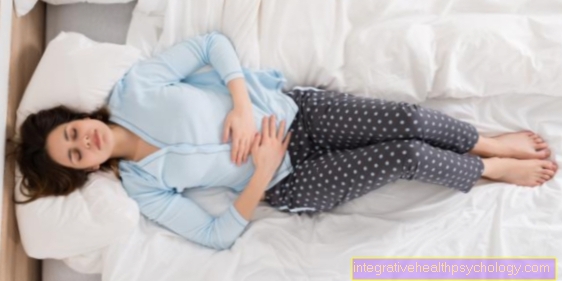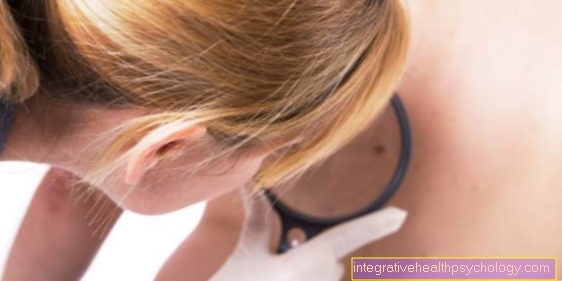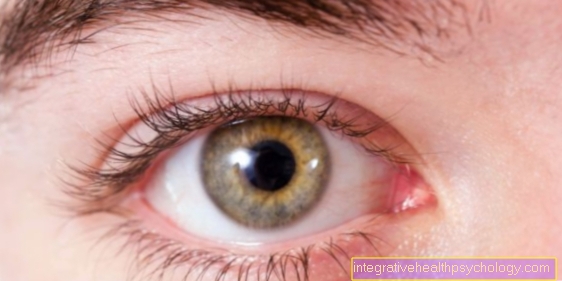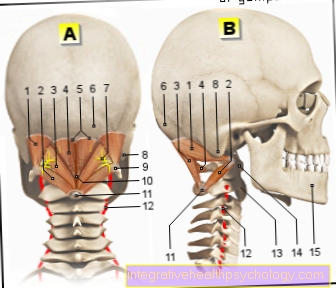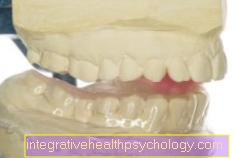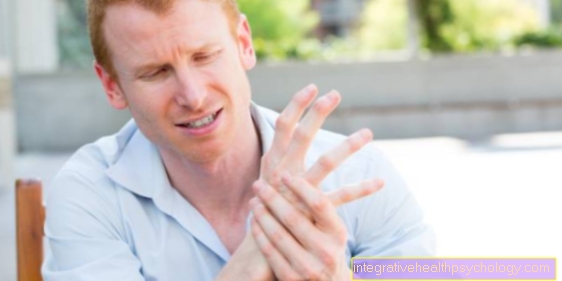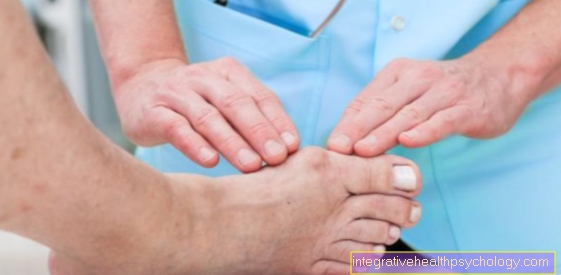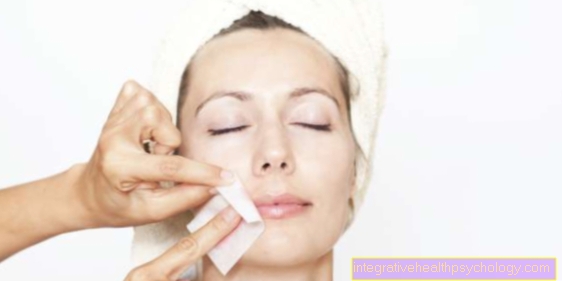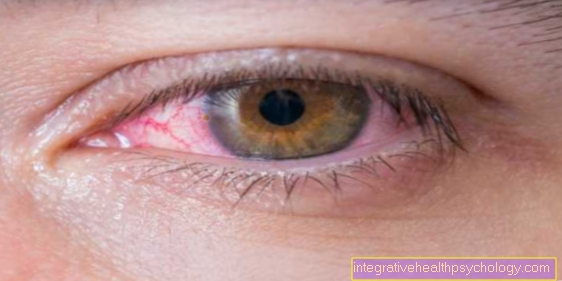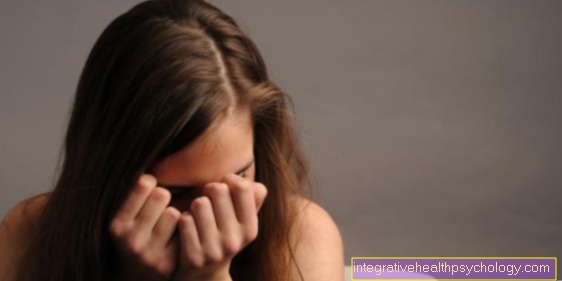The itchy eyelid
definition
External risk factors or certain diseases can make the eyelid itch. Depending on the underlying cause, additional symptoms such as redness, swelling and pain may occur.
The treatment of itching is very different. If external factors are the cause and these are avoided, the symptoms improve very quickly. If the eyelid is inflamed, however, cortisone ointments and possibly antibiotic / antiviral eye drops are required.

The reasons
External risk factors such as the wind or too dry air can irritate the eyelid and cause itching. Smoky or dusty ambient air is also bad for the skin and can particularly irritate the sensitive skin of the eyelids.
The use of some cosmetics and personal care products can cause an allergic reaction. The eyelids swell, itch, and are reddened. In addition, allergies to pollen or house dust mites can also irritate the eyelids.
Excess sebum production (seborrhea) can clog the glands on the eyelids. The sebum can no longer drain off and builds up. This leads to inflammation of the eyelids (blepharitis), which is associated with the classic signs of inflammation - redness, swelling and itching. Seborrhea is often seen in patients with rosacea or atopic dermatitis. In addition, some bacteria and viruses can cause blepharitis. The pathogens get into the sebum gland and infect it. The body's own defense cells release various messenger substances to fight the pathogens. These messenger substances can cause severe itching, among other things.
Find out more about the topic here: The eyelid inflammation.
The accompanying symptoms
Symptoms may differ depending on the underlying cause. If the itching was caused by external factors, such as the air being too dry, the skin on the eyelids can become dry and flaky. If the itching is caused by an allergic reaction, the eyelid may swell and redden. It is characterized by swelling of the entire lid (lid edema).
If there is inflammation, there is redness, swelling, and pain. Those affected usually also complain of watery eyes and blurred vision. A foreign body sensation is also often described. In addition, the lashes can be damaged by the inflammatory reaction and even fall out (madarosis).
The redness as a symptom
The reddening of the skin is a very non-specific symptom. It usually occurs when there is inflammation, as the body's own immune cells release messenger substances. These messenger substances lead to an expansion of the vessels. As a result, the skin is better supplied with blood and also appears reddened.
In addition, you tend to scratch your skin when it itches. This damages the superficial layer of the skin and creates tiny tears that bleed in. This intensifies the existing redness again.
The swelling as a symptom
The swelling is a symptom that often occurs with inflammation. The cause for this are the messenger substances that are released by immune cells. They regulate the inflammatory reaction and lead, among other things, to an expansion of the vessels. In addition, the permeability of the blood vessels and the skin is increased so that more immune cells can get to the scene. But this also leads to a leakage of fluid into the connective tissue, which causes the swelling.
Also read the article: The eyelid swelling.
The pain as a symptom
Pain is a classic symptom of inflammation. The cause of this are inflammation mediators that are released by immune cells. Inflammatory mediators are special messenger substances that regulate the inflammatory reaction. Among other things, they lead to a sensitization of nerves. This increases the perception of pain and stimuli that normally do not cause pain can be perceived as very unpleasant.
Burning as a symptom
A burning sensation on the skin is an accompanying symptom of eyelid inflammation. The inflammatory reaction leads to the sensitization of nerves. This increases the perception of pain and can trigger a burning sensation.
Dry skin as a symptom
External risk factors, such as stuffy room air or a smoke-filled environment, dry out the skin. The skin of the eyelids in particular is very sensitive and can dry out quickly. The superficial skin cells die off and become encrusted. These incrustations can be loosened by peeling.
In addition to external factors, diseases such as rosacea or neurodermatitis can also lead to dehydration and flaking of the skin.
The causes of dry skin? Read more about it.
The treatment
Treatment depends on the underlying condition. If the itching was caused by external factors, it is advisable to avoid them. Stuffy or smoky room air can be prevented by regular ventilation. You can wear protective goggles against the cold wind.
In the event of an allergic reaction, the triggering product should no longer be used. If you do not know exactly which product or which substance was the trigger, it is advisable to carry out an allergy test. If you have a pollen allergy or a house dust allergy, you can take antihistamines. They alleviate the symptoms and can improve the quality of life in severe forms.
The therapy for blepharitis, i.e. eyelid inflammation, differs depending on the trigger. If you have a bacterial infection, your doctor will prescribe antibiotic eye drops. If local therapy is not sufficient, systemic antibiotic therapy can be ordered. In addition, the doctor can prescribe a mild cortisone ointment, which is supposed to curb the local inflammatory reaction. If the inflammation was caused by a viral agent, an ointment with an antiviral agent can be used. A mild cortisone ointment can also be used here to reduce the inflammatory reaction.
Blepharitis caused by excess sebum production can be treated with eyelid hygiene. For this, the eyelid is warmed up with warm compresses or infrared light. Then the excretory duct of the sebum is massaged. This is supposed to loosen the blockage and ease the drainage of the sebum. Since blepharitis can be painful, it is advisable to take pain relievers.
Find out more about the topic here: The allergy test.
The home remedies
If the itching was caused by an allergic reaction, chilled compresses can be placed on the lid. This should relieve the itching. Alternatively, you can put chilled quark or yoghurt on the compress, place it on the eyelid and let it take effect. Another effective home remedy for itching is the Aloa Vera Gel. Due to the cooling and anti-inflammatory properties of the gel, unpleasant symptoms are alleviated.
In the case of inflammation of the eyelid margin, heat treatment is recommended. For this, compresses can be heated and placed on the lid. After a few minutes you can massage the lid to encourage the drainage of the sebum glands. Alternatively, you can also use a red light lamp. Then the lid should also be massaged.
The duration
Depending on the underlying disease, the duration of the itching can vary. If external risk factors are the cause of the itching and these are avoided, the symptoms improve quite quickly. Even if allergenic substances are identified and no longer used, there is a rapid improvement.
Blepharitis, on the other hand, can last a long time. The disease often becomes chronic and occurs again and again.

